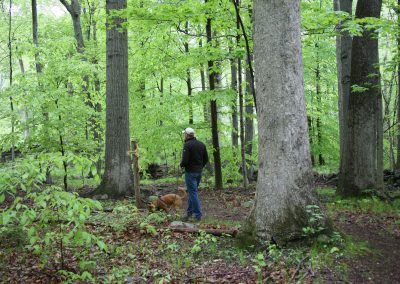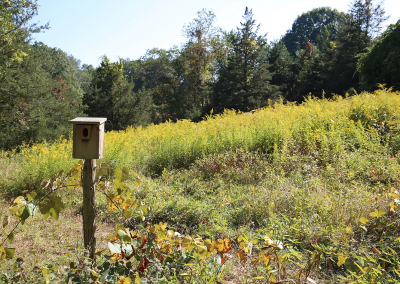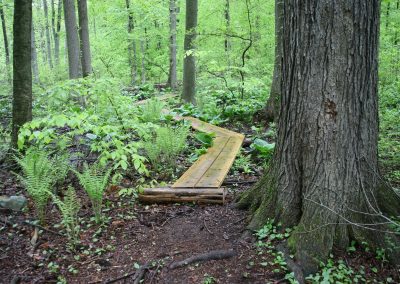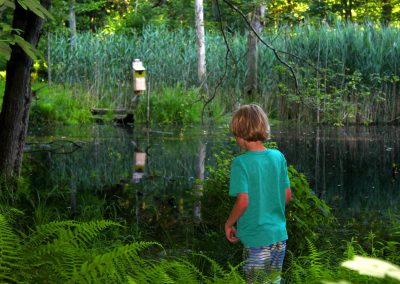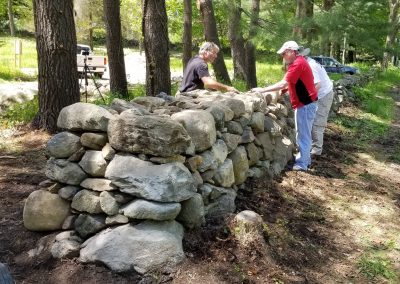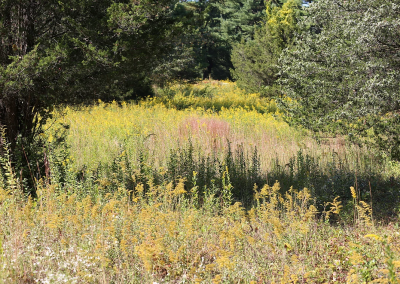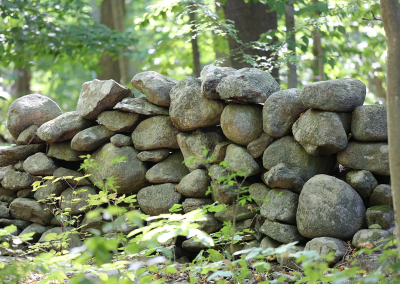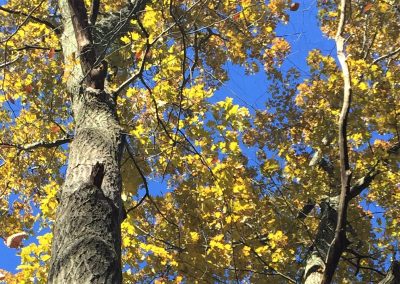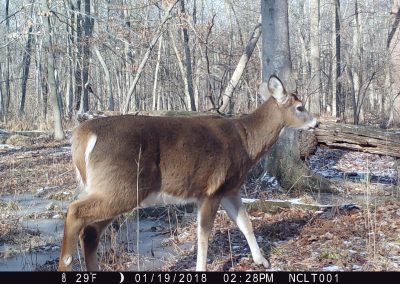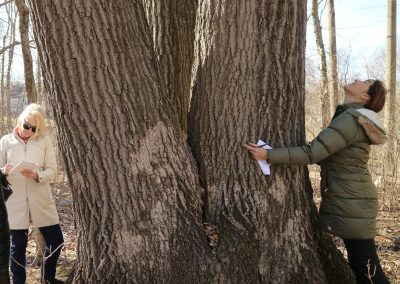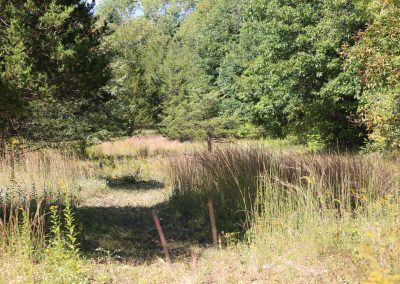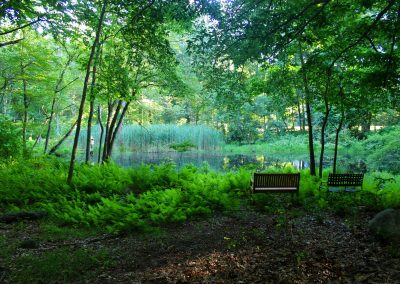Still Pond Preserve
(Silvermine-Fowler, Hicks, Kelley, Riedel, Bothwell, & Audubon)
Location: Southeastern New Canaan, in the Silvermine Neighborhood
Access: There are three access points for the Still Pond Preserve. To access the southern (Kelley/Audubon) portion of the property, park across from 161 Cedar Lane. To access the eastern (Silvermine-Fowler) portion of the property, park in the parking area across from 778 Silvermine Road. To access the northern (Hicks) portion of the property, use the trailhead directly across from 514 Silvermine Road.
Dates Protected: 1952, 1970, 1986, 1990, 2014, 2017
Acreage: 47.2 Trail Length: 1.3 miles
Visitation Hours: Dawn to Dusk Dogs Allowed? Yes, on leash
History: Currently 47 acres, this parcel grew as a series of donations starting in 1952 with Mr. and Mrs. Clarence King donating 21 acres in the memory of Henry Kelley to the Bird Protective Society of New Canaan, the forerunner to the New Canaan Audubon Society, which later dissolved and transferred its land holdings to NCLT in 2014. In 1970, Ira and Margaret Hicks donated 12.75 acres to NCLT. The parcel grew larger with a 1.5 acre donation by Herbert and Ruth Riedel in 1986, and again in 1990 with a donation of 5.5 acres by John Ripley Forbes of the Natural Science for Youth foundation.
In 2017, the New Canaan Land Trust successfully embarked on a capital campaign to purchase the 6.5-acre Fowler property. This was a strategic acquisition for NCLT, with the purchased land being adjacent to exiting NCLT property, and giving the Silvermine neighborhood easier access to the land. This acquisition was completed with the support of The Trust for Public Land, The Town of New Canaan, CT DEEP‘s Open Space and Watershed Land Acquisition Grants Program, The New Canaan Community Foundation, and generous donations from many of our members.
Today, the preserve protects over 40 acres of woodlands, meadows, wetlands, and the entirety of Still Pond.
Recreation Opportunities: NCLT has established, and continues to maintain an extensive network of walking trail at the Still Pond Preserve. The scenic trails extend into three different neighborhoods, providing a walkable link for residents, and ample opportunity to take in the natural beauty of the preserve. In recent years, scouts have helped to improve the property through the construction of raised walkways and benches, and the installation of trail signs and kiosks. This property is also a prime area for birding, with Still Pond being an important migratory stopover point. During a guided walk in 2019, visitors observed nearly 50 species in a two-hour period (their list can be seen HERE).
Land Stewardship: Since acquiring the Silvermine-Fowler Preserve in 2017, NCLT has transformed the property from a developed parcel into a natural oasis. Following the demolition of the existing house, NCLT embarked on a multi-year habitat restoration effort, guided by renowned meadow expert, Larry Weaner. More than 10,000 native grasses, perennial wildflowers, and shrubs were planted between 2019 and 2021.
In the woodlands of the Fowler parcel, volunteers, scouts, and interns have helped NCLT clear invasive burning bush from over 2 acres of the property. Much of that materials was used to create brush piles, which serve as terrific habitat for insects and small mammals. On Arbor Day of 2019, NCLT partnered with the Service League of Boys, National Charity League, and numerous volunteers to plant nearly 100 trees and understory plants. These plants are already providing food and habitat for migratory birds and native pollinators.
NCLT’s vision is to use the Still Pond Preserve as a demonstration site, where we can teach homeowners about the many ways that they can landscape their yards to provide better habitat for birds, butterflies, and other wildlife.
NCLT also underwent a large meadow restoration project at the Hicks meadow in 2019. Over the winter, NCLT cleared nearly an acre of invasive vines and shrubs that had begun taking over portions of the meadow, and pruned a number of trees along the perimeter of the field. This project expanded the meadow area, and will help to support an even larger wildlife population.
